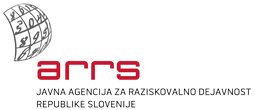Sea‐bottom sediments represent a unique repository of information on past climate, atmosphere and physical environment, which is preserved in fossils, sedimentary organic matter, and in authigenic and detrital minerals, but also in sedimentary structures and stratal architecture. The Gulf of Trieste, representing the northernmost part of the Mediterranean basin, thus holds the key environmental archives recording both local and global astronomically‐ and tectonically‐driven environmental changes, as well as the superimposed anthropogenic footprint. Studying the Holocene sedimentary record in sea‐bottom sediments would permit the reconstruction of the interplay between climatic, tectonic and human forcing factors over timescales from centuries to millennia.
Despite the obvious suitability of the Gulf of Trieste sea‐bottom sediments for paleoenvironmental studies, facilitated also by shallow water and generally calm weather conditions in the Gulf which make acquisition of sediment cores relatively easy, only a few studies so far were aimed at reconstructing past climate, tectonic and land‐use changes in the timescales over several millennia. Both the sea‐bottom geomorphology and the distribution of Holocene sediment thickness in the Gulf imply a complex interplay of factors affecting post‐Glacial sedimentation. The spatial distribution of continental to transitional paralic sedimentary environments and geomorphic features during the Holocene marine transgression clearly influenced sediment dispersal, which was then further controlled by the rate of terrigenous influx and by marine currents eroding and redistributing the sediment. Stratigraphic architecture in the coastal area is therefore quite complex. Unravelling this sedimentary dynamic is essential for properly interpreting geochemical proxies and other indicators recorded in the sedimentary column, and is also crucial for optimal planning of sampling and coring campaigns.
We postulate that changes in sedimentation rates and in sedimentation type of continental and shallow‐water marine clastic sediments of Late Glacial to Holocene age are controlled by climate fluctuations, tectonic forcing, and the growing influence of human society. The reconstruction of sedimentary dynamics will provide data on how precipitation patterns evolved throughout Holocene climate changes, on timing and magnitude of tectonic events in the region, and about where, when and why human societies became a geological agent. In this context, it is essential to identify and distinguish changes in sedimentation that are related to the regional climate signal and tectonics, and the ones that are related to the increasing human activity.
In the proposed project, we will use a source‐to‐sink approach that will rely on an interdisciplinary toolbox combining recent geology, sedimentology, geochemistry, geophysics, soil science and paleoecology. In this respect, our research area represents a unique natural laboratory, since the continental hinterland of the Gulf with associated catchment areas is relatively small, geologically and hydrologically homogeneous, and narrowly limited in extent by the contact of coastal flysch with karstified carbonate rocks in the hinterland. Our research will include detailed study of soils and rocks in the catchment area (e.g., Dragonja and Badaševica rivers), of the marginal sea‐land natural and anthropogenic environments, and of sea‐bottom sediments from the Gulf of Trieste. A particular focus will be put to erosion fluxes and to recognition of mass‐movement deposits.
The project is funded by the Slovenian Research Agency.
Project duration: 1.7.2019-30.6.2022
